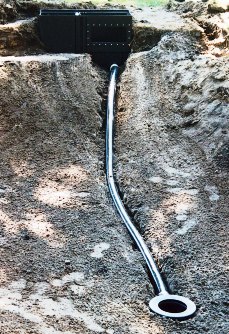May 2012 Pond Conditions Calendar
5/4/2012 Water Temp 74*, Air Temp 65-83*, pH 7.3, Amonia/Nitrates 0, GH 40, KH 30
Had a significant drop in pH from last weeks average of 7.9. We had about an inch of rain and I also began feeding the Hikari Saki Color food this week. So I don’t know if the rain was acidic or if the fish are using up the ingredients in the pond that keep the pH higher. There was a good bit of debris from the tree above the pond which may contribute to it too. Double checked the calibration of the meter. Fish are looking healthy except the Kujaku who has what looks to be a fungus on one side, or possibly his scar from last year. I need to purchase a large net and bowl him up for a closer look.
5/6/2012
pH 7.5, Amonia/Nitrates 0. pH rising slightly again.
5/7/2012
pH 7.4, Ammonia 0, Nitrites .1, Nitrates 5
Getting slight increase in Nitrites and Nitrates. Need the veggie filter to start kicking in. Will start doing water dumps from the filter on Monday and Thursday and a thorough filter cleaning on Saturdays. Estimated water change weekly will be about 25% not including rain overflow.
5/10/2012
Water Temp 70*, Air Temp 55-73*, pH 7.4, Ammonia 0, Nitrites .1, Nitrates 5
No change, monitoring daily. Reduced flow into filter to see if bio layers can catch up to Nitrite production. Added a little baking soda to help keep pH stable.
5/11/2012
Water Temp 70*, Air Temp 55-78*, pH 7.4, Ammonia 0, Nitrites .1, Nitrates 5
5/12/2012
Water Temp 64*(morning), Air Temp 50-73*, pH 7.4 (stable)
Performed weekly filter cleaning and found a ton of snails but pads were not too filthy. Moved air back to pond for summer. Pond is getting murky but doesn’t seem to be algae. Perhaps just extra debris. Hopefully removing the air from the filter will allow more debris to settle in the filter and not recirculate.
5/14/2012
pH 7.4, Ammonia 0, Nitrite .3, Nitrates 5
Increased Nitrites. I had sped up the flow rate through the filter to clear the pond of dark debris after the big rains. I slowed it down after taking the water readings to see if I can pull the Nitrite levels back down. Fish do not seem bothered by this low level Nitrite. Plants are beginning to grow more vigorously.
5/16/2012 – Ammonia 0, Nitrite .3, Nitrates 10
Nitrates not decreasing even with slower water through the filter. May just need time to build bacteria.
5/18/2012
Water Temp 68*, Air Temp 58-78*, pH 7.1, Ammonia 0, Nitrites .3, Nitrates 10
Water is darkening with algae but has not yet turned green since turning off UV last week.
5/20/2012
Water Temp 68*, Air Temp 60-85*, pH 7.1, Ammonia 0, Nitrites .8, Nitrates 20
Nitrites/Nitrates still rising. water change 500 gallons(30%) did not reduce it.
5/22/2012
Air Temp 60-75*, pH 7.3, Ammonia 0, Nitrites .3, Nitrates 5
Nitrites/Nitrates reducing. Have had 3 days of heavy rains performing overflow water changes.
Even had some hail which surprisingly did not lower the water temperature but it did tear up some of the leaves on the hyacinth.
5/27/2012
Water Temp 72*, Air Temp 65-88*, pH 7.2, Ammonia 0, Nitrites .8, Nitrates 20
3 days of Potassium Permanganate treatments at 2 teaspoons. Removed filter pads for treatment. Nitrites back up as expected due to loss of bacteria in the piping. Pond is much cleaner and most of the algae particles are gone. Bottom drain working better. Will continue to change 100+ Gallons daily.
Adding 2 TBSP koi clay daily.
5/27/2012
Water Temp 72*, Air Temp 65-88*, pH 7.2, Ammonia 0, Nitrites .3, Nitrates 20
Nitrites falling with water changes. UV is back on.
EXPENSES
Continuing education – Ordered copies of Peter Waddington’s Koi2Kichi and Koi Crazy. $119
Book – Living Jewels – $29
Declorinator – $35
Water bill – $12.68
Koi Clay – $28 Trying it again to see if it will act as a flocculant.
Saki Hikari Growth food – $56
Potassium Permanganate – $30 1 lb.
 1) Bottom drain should have 3-4″ pipe minimum.
1) Bottom drain should have 3-4″ pipe minimum.
